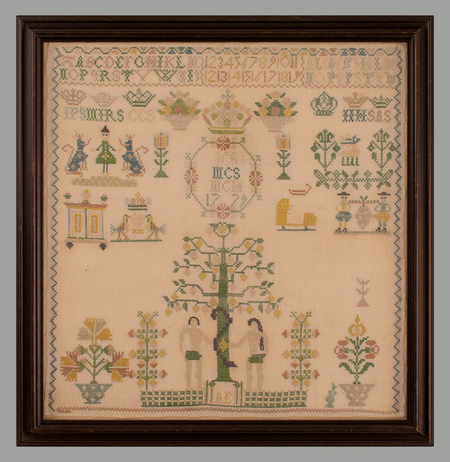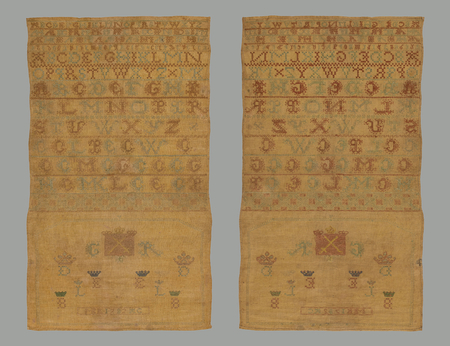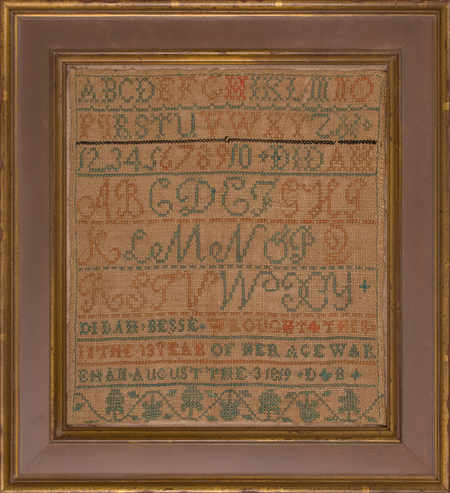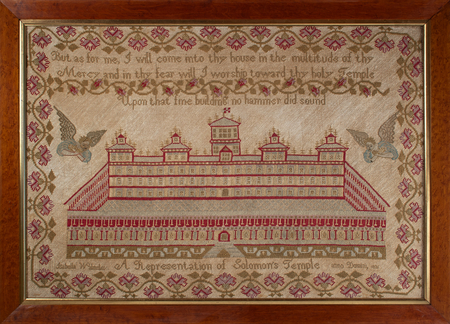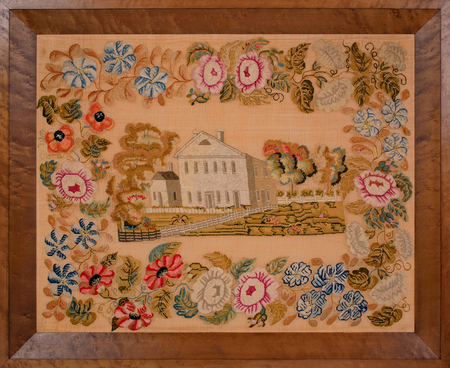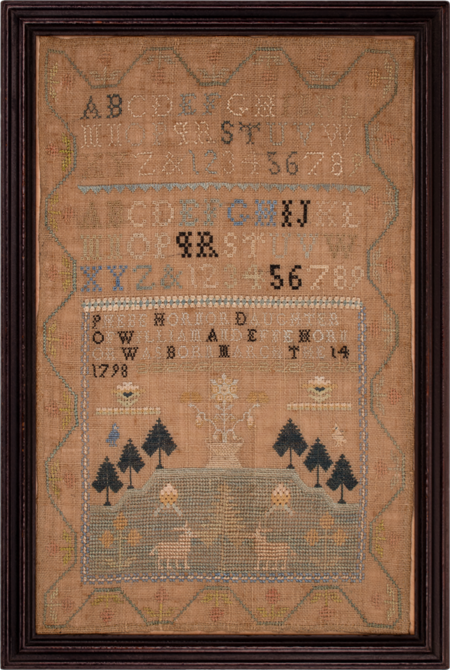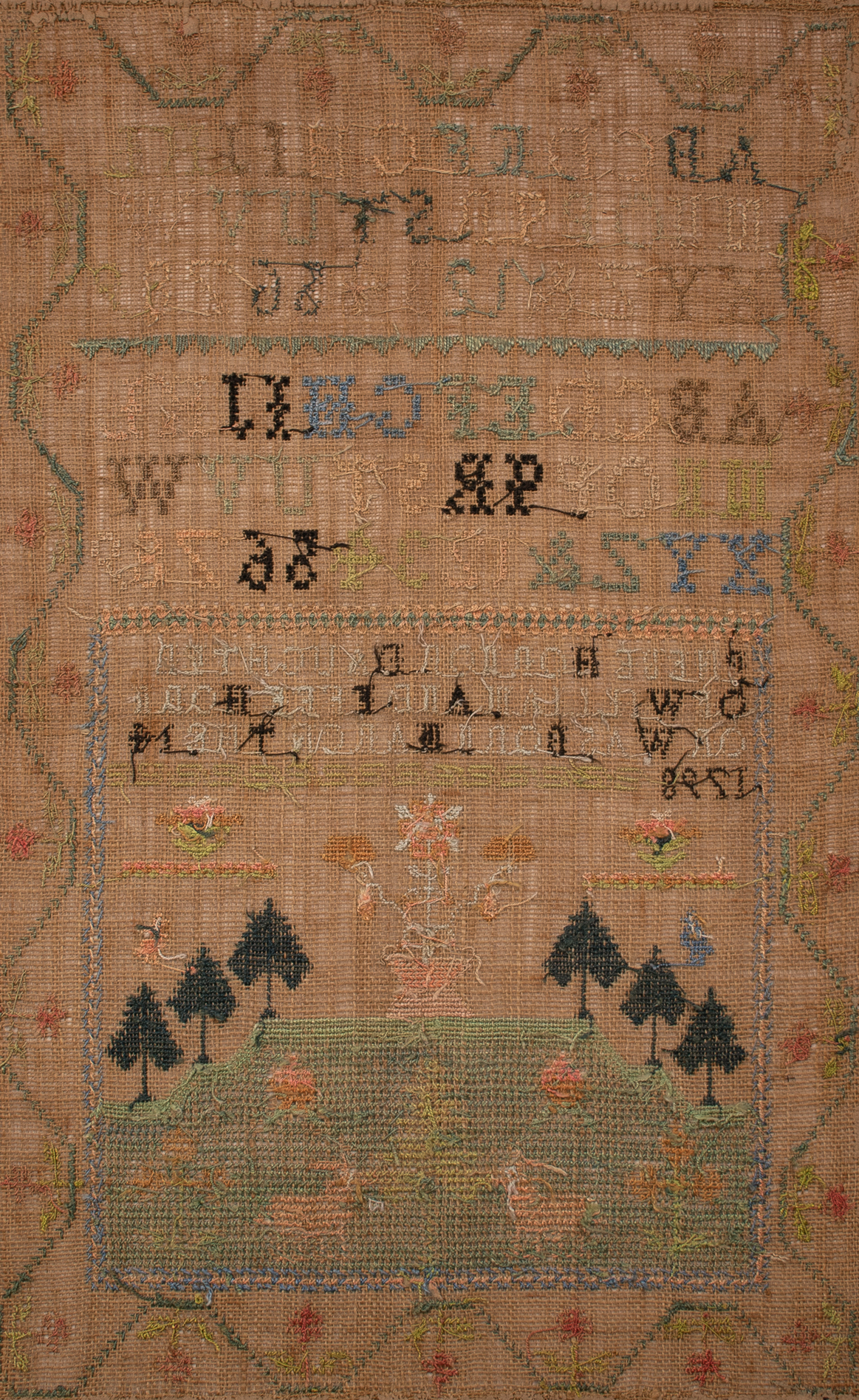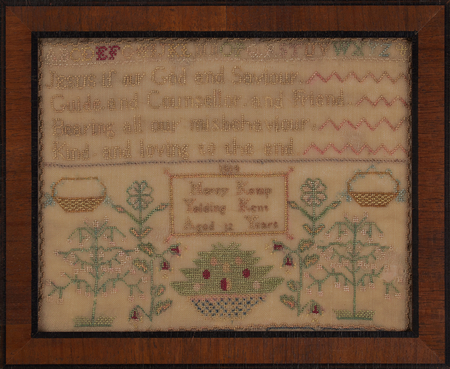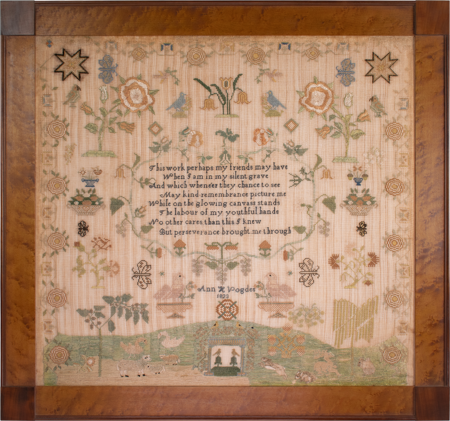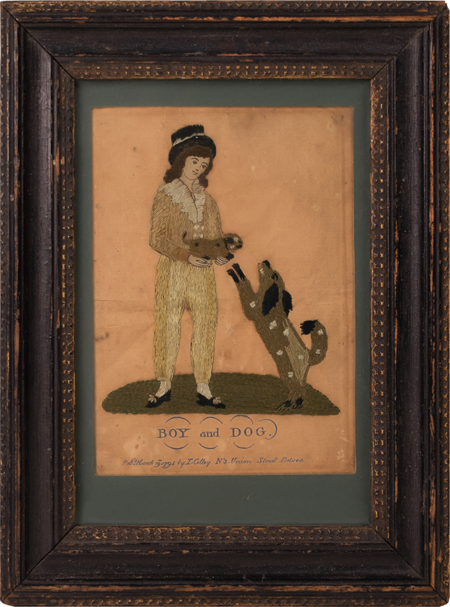The splendid large pictorial samplers made at the school of Mrs. Mary Ralston of Easton, Pennsylvania in the 1830s are among the most interesting of all of the early 19th century samplers made in the mid-Atlantic region. Writing in Girlhood Embroidery, vol. II, Betty Ring provides much information about Mary Ralston and the highly recognizable samplers worked under her able instruction, featuring “impressive buildings surrounded by heavy floral borders worked in wool.”
Mary Ralston (1772-1850) commenced teaching in Easton and opened a girls’ private school that was in operation from 1813 until 1834. She was highly respected, as evidenced by the published obituary in the April 13, 1850, Easton Democrat and Argus: “[Mrs. Ralston] had resided in this place, where for many years she conducted a female school. Her many moral and social virtues made a lasting impression upon the affections of this community.” Along with these large, praiseworthy samplers, other smaller ones were made at the school; these are also documented by Betty Ring in the same book.
The most sought-after Ralston School samplers closely resemble this excellent piece, with a fine depiction of a handsome, large building, worked in shades of grey. The complex borders are lavished with detail and beautifully composed with large, shaded flower blossoms and leaves. A few of these Ralston School pieces include an interesting and unusual technique - black or dark brown velvet fabric was used for the centers of several of the flowers, with silk embroidery over the velvet, creating an outstanding depth to those flowers; this is evident on our praiseworthy sampler.
Interestingly, this sampler descended in the family along with a small sampler, shown here as well. This was also made at Mary Ralston’s school and is signed by Susanna Lehn and dated 1822. Susanna was born in 1811 to John and Susanna (Gangwehr) Lehn of Easton.
Prior to about 1830, the samplers made under Mary Ralston's instruction (briefly mentioned above) were small and much simpler, and included a house outlined with cotton thread. The small sampler made by Susanna Lehn leads to a confident attribution that the large one was also made by a member of the Lehn family, most likely the same samplermaker. Susanna remained single and would likely have continued her education in the needle arts. This sampler will accompany the large one.
The large sampler was worked in silk and wool with velvet on linen and is in excellent condition. It has been conservation mounted and is in a fine figured maple frame.
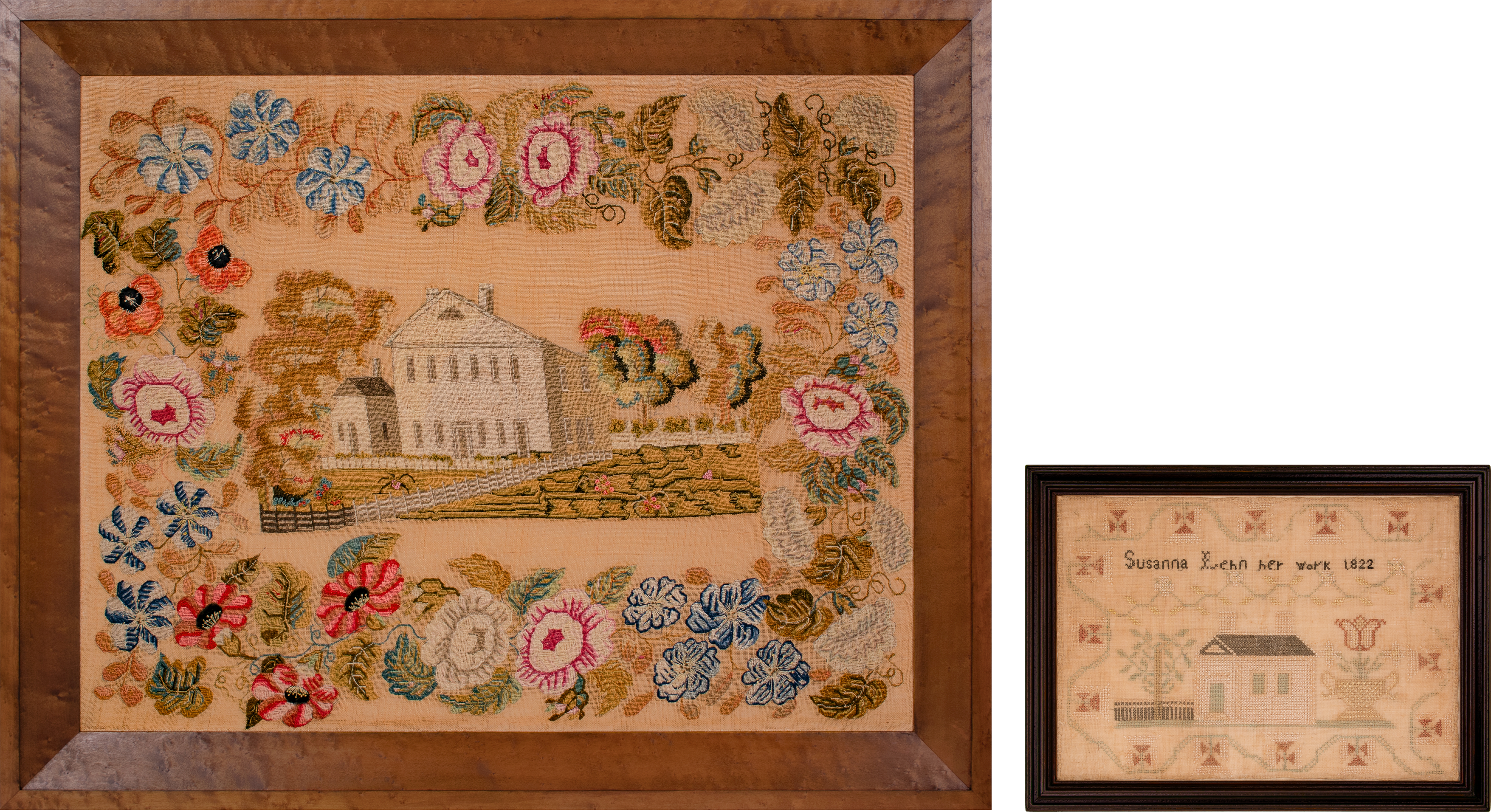
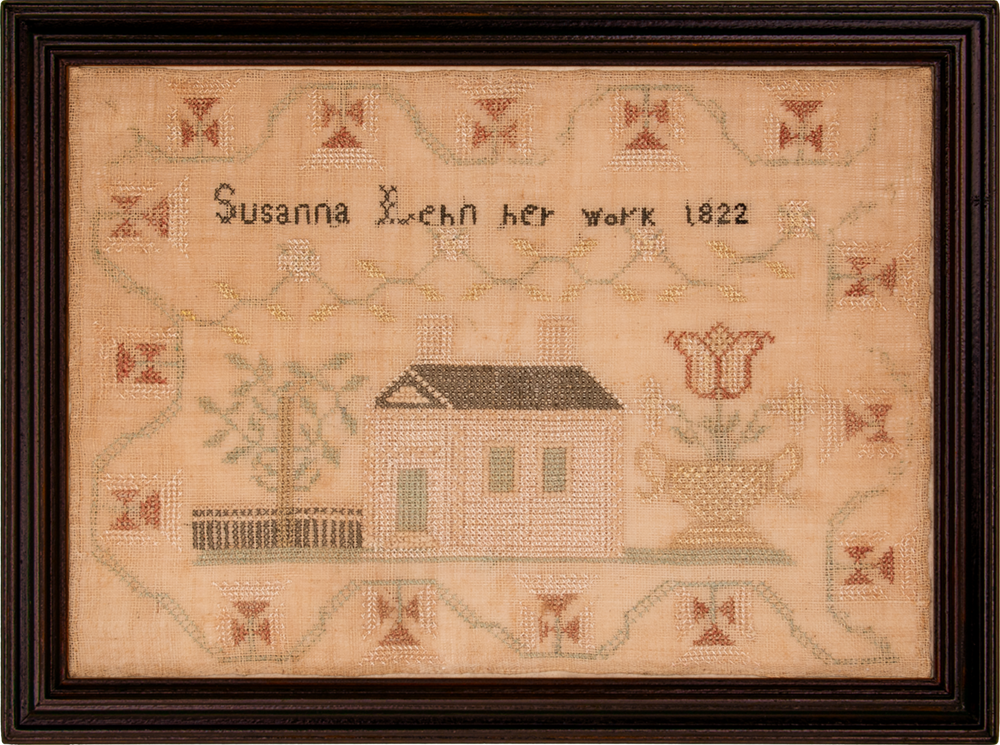
photo of accompanying Susanna Lehn sampler
